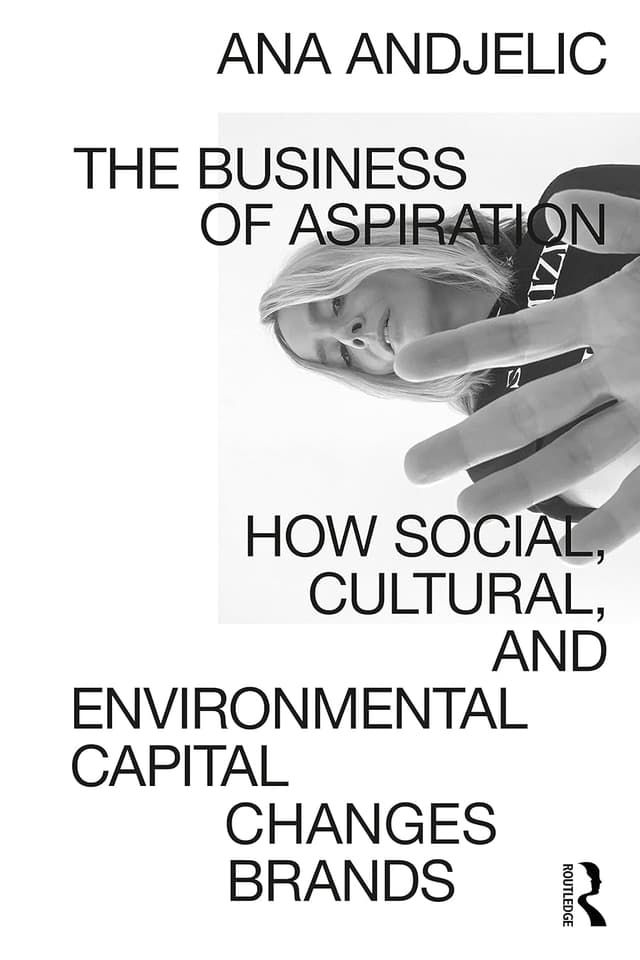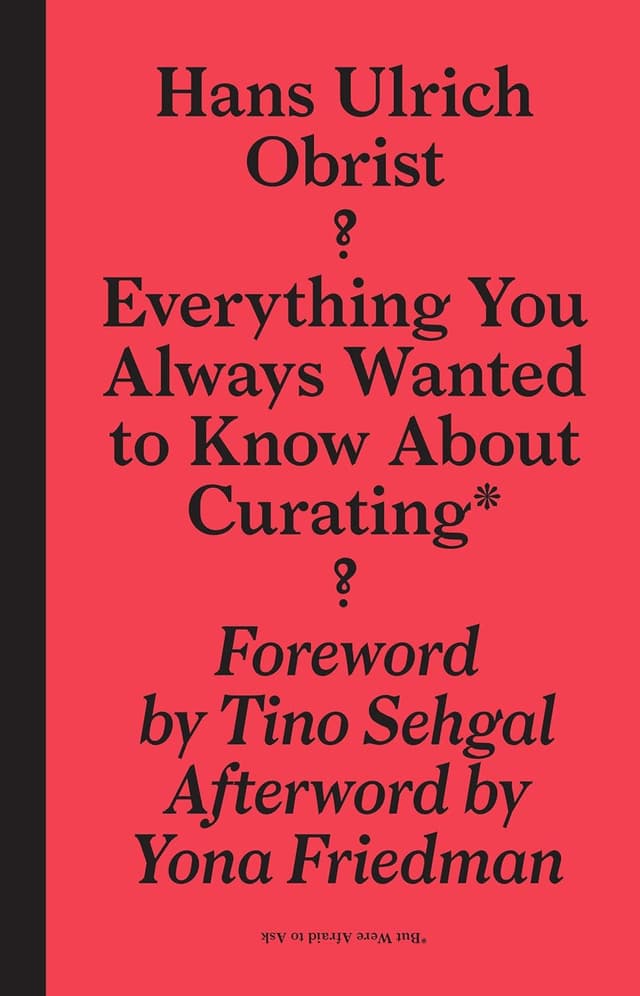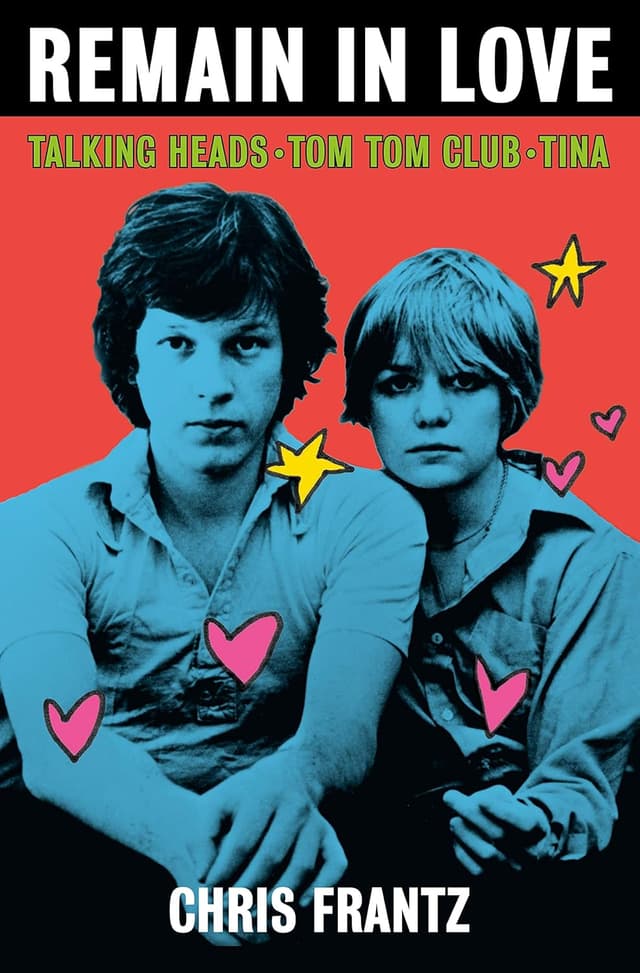Ana Andjelic | October 26, 2020
Why is this interesting? - The Monday Media Diet with Ana Andjelic
On strategy, the back lanes of Osaka, and curation
Recommended Products

Ana Andjelic, named one of the Most Influential CMOs by Forbes, specializes in building brand-driven modern businesses. Her book explores this in depth.

A book by Hans Ulrich Obrist, offering insights into the world of art curation.

Chris Frantz's memoir about his time with the bands Talking Heads and Tom Tom Club, and his relationship with Tina Weymouth.
Ana Andjelic (AA) is a long standing friend of WITI and the rare person who can thread the needle from academia and theory into where the rubber meets the road in culture. She’s a strategy executive, recently named one of the Most Influential CMOs by Forbes, and author of “The Business of Aspiration," out tomorrow on Amazon. Go buy it. She specializes in building brand-driven modern businesses and runs a superb weekly newsletter, The Sociology of Business. -Colin (CJN)

Tell us about yourself.
I am a strategy executive, author and undercover sociologist. I earned my doctorate degree in sociology but ventured into a professional career, first in advertising agencies and then brand-side. I am also a startup advisor, public speaker and columnist. My area of specialization are fashion, luxury and lifestyle brands. I am obsessed with modern aspirational economy, the changing meaning of luxury and Canal’s street counterfeit scene, which has become incredibly vibrant since this summer. All one needs to know about what’s popular and what’s next is right there. I have recently been told that I have too many ideas, which is probably true. Nothing makes me happier than to make people think. To that end, I run a weekly newsletter, The Sociology of Business and wrote a book, Business of Aspiration. I am from Belgrade, Serbia and have lived in New York City for twenty years, so watch out for sharp edges.
Describe your media diet.
Best way to describe it would be old school. I read books, print magazines and newspapers. Books can be anything from David Chang’s new memoir “Eat a Peach” to “Tsukiji: The Fish Market at the Center of the World” to an academic book to Japanese Vogue and 032C. I am also no stranger to a good academic paper from sociology, behavioral economics or social psychology. For those who are interested, a couple of months ago I listed my favorite reads in Part I and Part II on my newsletter. Make sure to check it out. I put together a list not just of books but also podcasts and newsletters. Speaking of newsletters, Lean Luxe, Public Announcement, The Rebooting and WITI are opened as soon as they hit my inbox. My favorite cultural analysis sites are SSense (great selection of brands, too), Highsnobiety, Intercept and Vestoj. Print magazines are Cura, System, Worth, Frame, Berlin Quarterly, Courier. I am reading Financial Times Weekend obsessively and The New Yorker and Economist a little less obsessively, but still regularly. When it comes to Twitter and Instagram, I have been very selective from a get go in terms of who and how many people I follow. The ratio is about 10 percent on Instagram and about 20 percent on Twitter (of who I follow vs my followers). It forces me to curate the content I want to see and to be both selective enough and diverse enough in my sources. Podcasts I listen to are: Cautionary Tales, How Long Gone, Unseen Unknown, 99% Invisible. I enjoyed Articles of Interest.
What’s the last great book you read?
I spoke with Hans Ulrich Obrist the other week for a Highsnobiety piece on curation that I wrote. Immediately afterwards, I went online and bought his book, “Everything You Always Wanted to Know About Curating*” and read it on my way to Mexico City. He is a fantastically interesting and passionate cultural omnivore, and his books are the same. Obrist is an incredibly prolific writer, so I recommend starting with his work on curation and working your way up from there.
What are you reading now?
“Remain in Love: Talking Heads, Tom Tom Club, Tina” by Chris Frantz.
What’s your reading strategy when you pick up a print copy of your favorite publication?
Start from the end. Unclear why I do that, but I have been doing it ever since I started reading newspapers and magazines. With Financial Times Weekend, I always start with Janan’s piece. It sets the right tone. With The New Yorker, I start from the cartoons and Anthony Lane’s movie reviews. With fashion magazines, it’s the same, I always start from the interview or whatever it is at the end.
Who should everyone be reading that they’re not?
Simon Kuper’s articles are by default smart, funny and informative. Atul Gawande’s books are always well-written and easy to read, even when they deal with complex subjects. In fiction, I love Siri Hustvedt and Zadie Smith.
What is the best non-famous app you love on your phone?
Embarrassingly so, I still use Swarm, but (obviously) not for social reasons. Rather, it’s a great memory tool of where I have been and what I liked and is so easy to pull recommendations when I need to share them with someone. I travel a lot (well, I did until this Spring) and my memory is terrible.
Plane or train?
Train in Japan and in Europe, planes everywhere else.
What is one place everyone should visit?

坂上家 in a maze of back lanes near Osaka station (see, I had to use Swarm/Foursquare City Guide for that). It’s a hole in the wall place with a bustling atmosphere and great food. Beniya Mukayu onsen near Kanazawa is the most zen place I ever experienced. It’s perfect for spiritual rebirth. And Belgrade, obviously, which is good for everything else.
Tell us the story of a rabbit hole you fell deep into.
Late one Friday evening last Fall, I started reading about the ideas of this nutritionist Gil Jacobs who is in his sixties but looks about thirty. More importantly, Jacobs has this entire philosophy of how what we eat makes us feel and what food is good for us to eat (basically nothing that we eat regularly) and how to cleanse your body and all about alkalinity and acidity in our body. It sounds really boring, but I basically self-radicalized until 2am. Couldn’t stop. I did change a lot of my dietary habits afterwards. (AA)
Thanks for reading,
Noah (NRB) & Colin (CJN) & Ana (AA)
—
Why is this interesting? is a daily email from Noah Brier & Colin Nagy (and friends!) about interesting things. If you’ve enjoyed this edition, please consider forwarding it to a friend. If you’re reading it for the first time, consider subscribing (it’s free!).